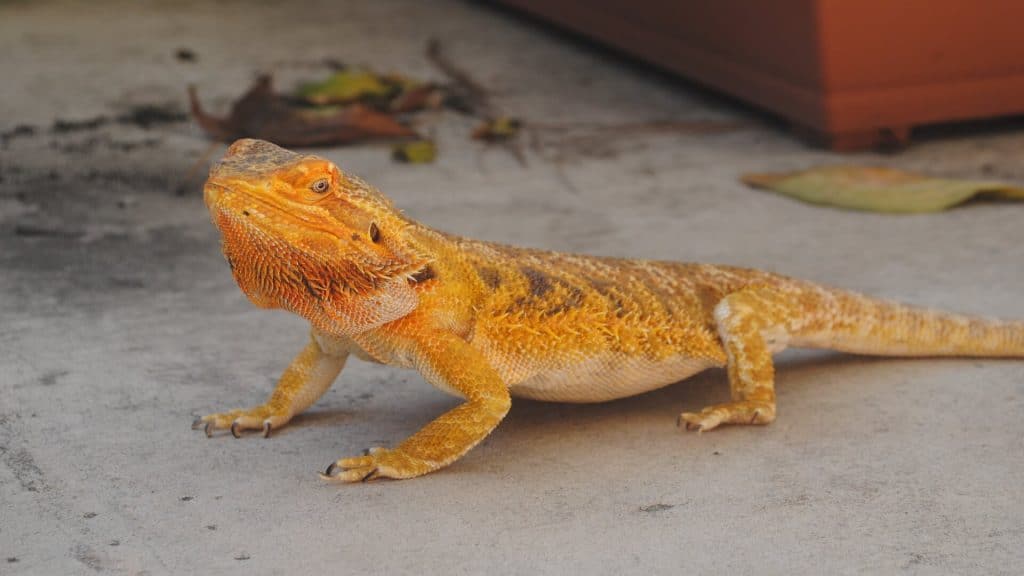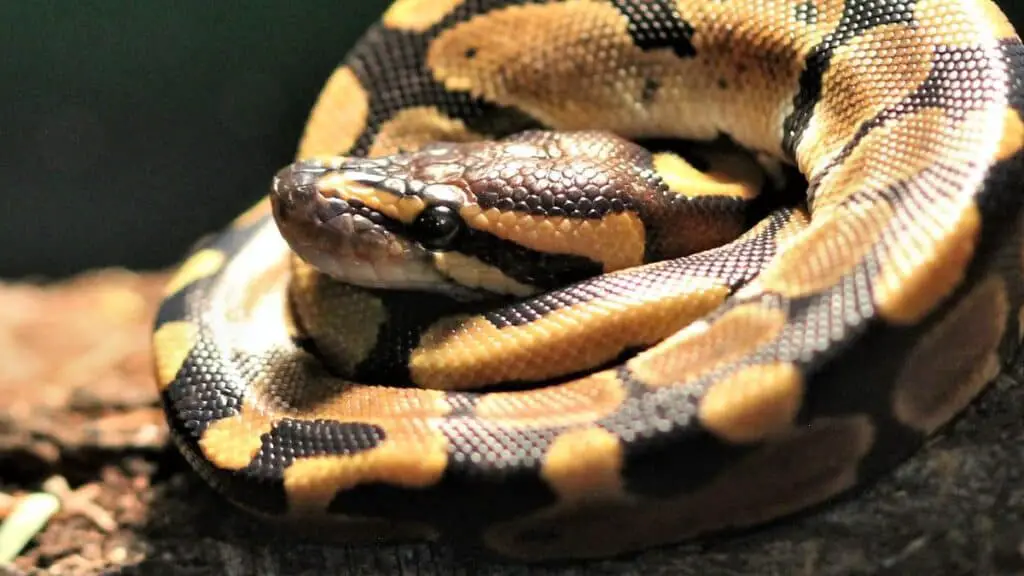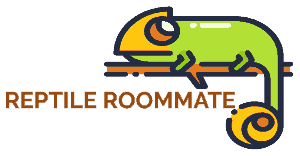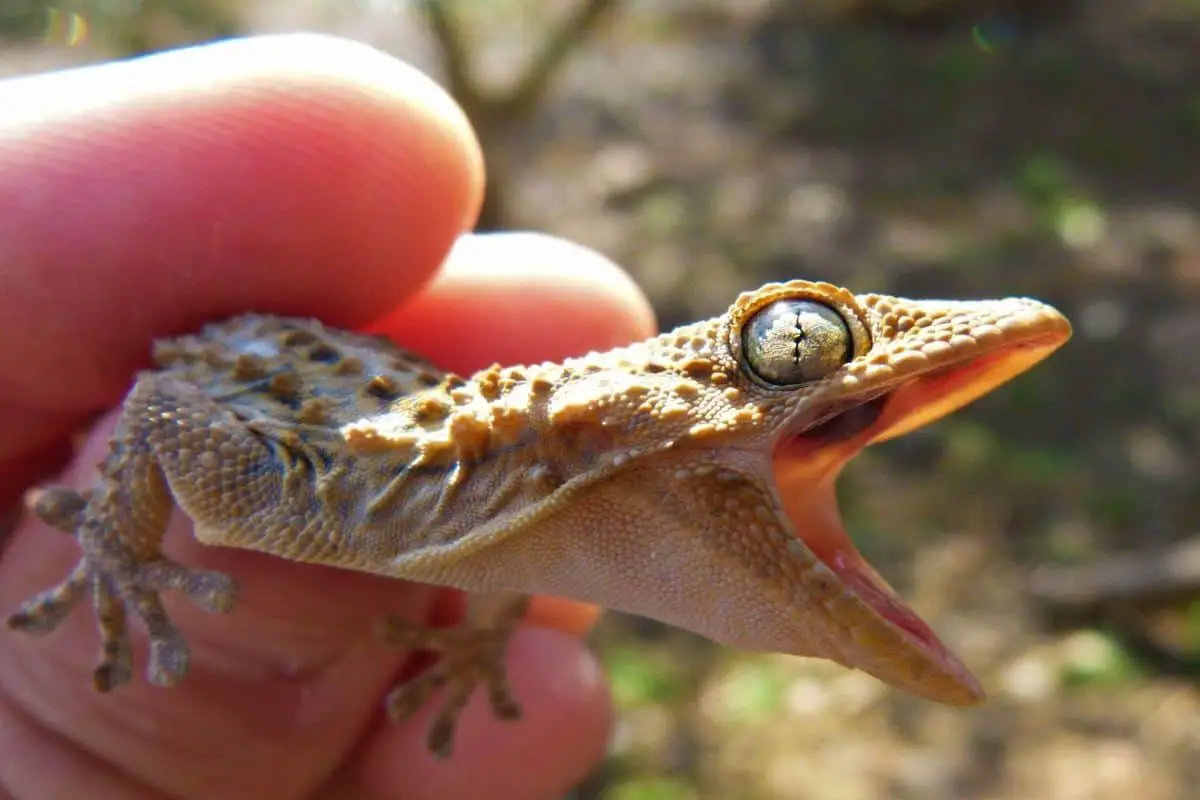Pet Reptiles That Don’t Bite! Top 5 Tame and Trustworthy Reptiles
So, with complete honesty any animal with a mouth can bite you. Period.
However, there are reptiles that you would be hard pressed to get them to bite without extreme provocation. These are the Top 5 reptiles that don’t bite! Usually.
Reptile Roommate is a participant in the Amazon Services LLC Associates Program. As an Amazon Associate I earn from qualifying purchases.
Leopard Geckos Don’t Bite
Leopard geckos have great temperaments and are quite docile. Leos take well to handling and are seldom bothered by being picked up and held.
That said, on occasion and most often mistaking a finger for food, leopard geckos can give a small nip every now and then.
In the unlikely event that your leo does give you a pinch it will rarely lead to anything more than a small red mark.
The most “dangerous” part of the encounter will without a doubt would be for the gecko as leos can drop their tails when frightened or threatened. It may also cause you to ‘jump’ just because it caught you so off guard.
On average leopard geckos are one of the least likely reptiles to bite you!
5 Tips For Handling Your Leopard Gecko
- Approach your leopard gecko slowly and calmly.
- Always be aware of your leo’s tail and never grab or squeeze it.
- Hold your leopard gecko from underneath its body and keep it fully supported.
- Take a secure (but not hard) grip on your leo so it doesn’t fear falling.
- ALWAYS wash your hands with soap and water after handling your leopard gecko!
•Check out our comprehensive Leopard Gecko Care Guide•
Bearded Dragons Don’t Bite
Not to be outdone by leopard geckos, bearded dragons (or beardies for short) are exceptionally tame and good-natured pets.
Bearded dragons are one of the few reptiles that can be argued to actually enjoy being handled. Bearded dragons are naturally docile and have “friendly” demeanors.
Bearded dragons are actually one of the best reptiles for young children because they are so reluctant to bite or scratch!

5 Tips For Handling Your Bearded Dragon
- Always be calm and approach your beardie slowly from the side.
- Do not “rush” or lunge forward with your hands, keep things gentle.
- Softly talk to and pet your bearded dragon under its chin to help it relax.
- Hold your bearded dragon from underneath its body and always fully support its weight
- ALWAYS wash your hands with soap and water after handling your bearded dragon!
Western Hognose Snakes Don’t Bite
One of the least likely snakes to bite you would definitely be a western hognose.
Did you know that western hognoses are mildly venomous? Don’t let that scare you however! Let’s talk some more about that venom. (and how it’s delivered)
Unlike most venomous snakes that deliver their venom through large front fangs, hognose are what is called rear-fanged venomous.
They don’t “inject” their venom like a rattlesnake or cobra but instead “chew” the venom into their prey by the use of grooves in their back teeth.
A hognose would actually have to chew on you in order to get any venom into you.
That still may not make you feel completely safe! But…
Hognose snakes are mildly venomous; meaning that a reaction to a hognose “bite” is more like a bee sting.
For most people that means some possible slight swelling and redness. (those allergic may experience more dramatic symptoms)
Hognose snakes tend to be great actors! They will puff up, hiss, play dead, and even head butt! However, this is all a big show and like mentioned earlier they rarely every attempt to actually bite!
5 Tips For Handling Your Western Hognose
- Always approach calmly and slowly.
- Don’t get nervous or frightened by your hognose hissing or puffy up it head and body.
- It’s best NOT to handle your snake for at least a day or two after it’s eaten a meal.
- Always fully support your hognose’s weight as it doesn’t “hold on” to your arm or hand they way a ball python does.
- ALWAYS wash your hands with soap and water after handling your western hognose!
Ball Pythons Don’t Bite
Ball pythons are wonderful pet reptiles! They are also known for their reluctance to bite or strike.
Most ball pythons will curl up into a “ball” and tuck their heads inside when they fell threatened or scared.
Ball pythons are also slow-moving snakes, especially when compared to milk snakes or even corn snakes. Ball pythons also are heavier bodied snakes, making them a bit easier to “get ahold of.”
Of special note with ball pythons is that they sometimes are difficult feeders, they tend to “go off” food every once and awhile which can be frustrating and somewhat alarming to keepers.
If your ball python has been refusing food for an extended period of time it might be best to try and not handle it for a few days to see if that will entice it to eat.
Overall, ball pythons are great snakes and some of the least likely reptiles to bite!

“Ball Python” by Renee Grayson is licensed under CC BY 2.0
5 Tips For Handling Your Ball Python
- Never handle your ball python after feeding.
- Try not to approach your snake from above like a predator (hawk, etc)would, come from the side.
- Pick your ball python up from the middle of its body, not its head or tail.
- It might be best to wait to pick up your snake if it is in shed or about to go into shed.
- ALWAYS wash your hands with soap and water after handling your ball python!
•Check out our comprehensive Ball Python Care Guide•
Crested Geckos Don’t Bite
Last on our top 5 is the crested gecko. But don’t assume it’s in last for any negative reason; crested geckos rarely bite! …and if they do, it’s really not much more than a pinch!
Crested geckos also make great beginner reptiles. Their pleasant demeanor and ease of care make them great reptile pets!
Crested geckos are comfortable in most room-temperature environments so it makes caring for them that much easier!
The one main difference in handling crested geckos is that you need to be a bit more on your toes.
These geckos’ natural habitat are jungles and they tend to “take flight” and jump to the next “tree” or “plant” on a whim! (they seem to assume that there’s always something safe to land on)
So it’s our responsibility to handle them accordingly and make sure that we don’t handle them too far off the ground just in case they get away.

5 Tips For Handling Your Crested Gecko
- Always mindful of your crested’s tail, they can and will drop them if pulled on or held.
- Crested geckos tend to jump at any given moment, just be prepared for a sudden leap and make sure your gecko is safe.
- Cresteds are great at climbing and hanging all over you! It’s not uncommon the have them crawl up your arm and even onto your back!
- Try to handle your crestie in a calm and quiet environment to preventit from being skittish.
- ALWAYS wash your hands with soap and water after handling your crested gecko!


